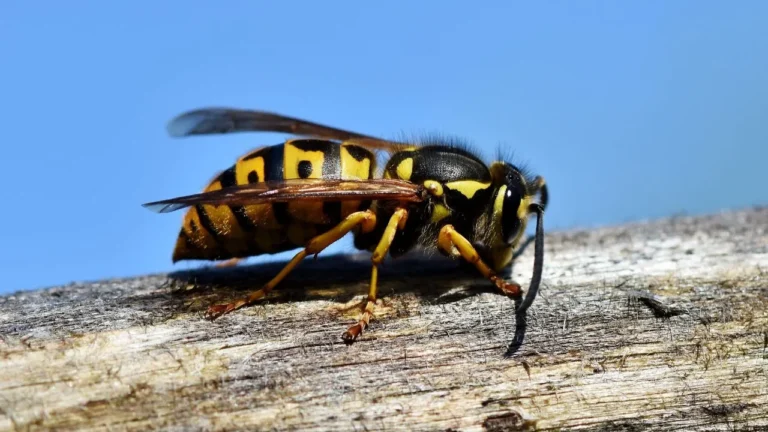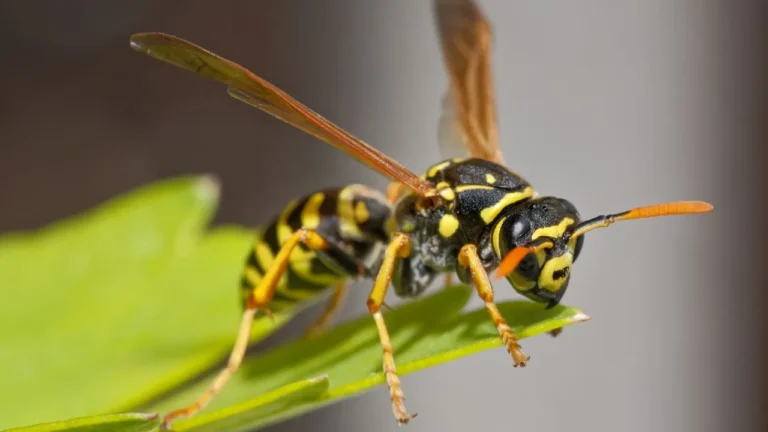What Are Wasps Attracted To? Here’s What You Should Know
Wasps are a common sight during warm months, especially in late summer and early fall. If you are worried about “what are wasps attracted to?” Understanding what attracts wasps can help prevent unwanted encounters. Meanwhile it makes your outdoor spaces more enjoyable.
Key Takeaways
“What Are Wasps Attracted To?” Here is what we have discussed in this article.
What Attract Wasps?
Let’s break down why wasps are attracted to certain things. Meanwhile we will share some helpful tips to keep them away from your home and yard.
Food Sources
One of the biggest reasons wasps come around is food. They need food for their survival and energy. This requirement is more in late summers. They are omnivorous, meaning they consume both plant and animal matter.
Sugary Foods
Sugary foods and drinks are major attractions for wasps, particularly in late summer. During this time, adult wasps seek out high-energy foods to prepare for colder months. You might notice them hovering around soda cans, fruit juice, or even ripe fruits in the garden. This is why outdoor picnics and cookouts often attract wasps.
Proteins and Meat
Early in the season, wasps are more focused on finding protein sources to feed their larvae. They may be drawn to meat, fish, and even pet food. If you’re grilling outdoors, be aware of the smell of cooked meat. Because it can bring wasps right to your gathering.
Bright Colors and Floral Patterns
Wasps are naturally drawn to flowers as a source of nectar. However, brightly colored clothing, especially floral patterns, can trick wasps into thinking you’re a flower. This is why wearing bright colors or flowery designs can increase the chances of attracting wasps while you’re outdoors.
Fragrant Scents
Sweet or fruity perfumes, lotions, and scented soaps can also attract wasps. Since wasps rely heavily on their sense of smell, these scents can make them think there’s a food source nearby. If you’re planning to spend a lot of time outdoors. It might be best to avoid strong fragrances that could lure wasps closer to you.
Open Trash Bins
Uncovered trash bins are one of the most common wasp magnets. Trash often contains remnants of food and sweet-smelling items that are irresistible to wasps. Outdoor garbage bins, especially those with sugary or protein-rich waste, are prime targets.
Water Sources
Just like other insects, wasps need water to survive. Puddles, bird baths, and even damp areas in your yard can be sources of attraction. While they don’t usually hover around water as much as food. Furthermore, they will stop by if they need a drink or need to cool off on a hot day.
Nesting Sites and Shelter
Wasps build nests in protected areas where they feel safe. This can include areas like attics, eaves, sheds, and the undersides of decks. Nests often grow larger toward the end of summer, as wasps are in their peak season. Once a wasp finds a good nesting spot, it may return to the same area year after year.
What Attracts Wasps to Your House? Tips to Keep Wasps Away
Knowing what attracts wasps can help you take steps to keep them at a distance. Here are some easy, effective tips:
Cover Food and Drinks
When eating or drinking outdoors, try to keep food and beverages covered. Consider using lids on drink containers, and store food in sealed containers. This simple step can significantly reduce the chances of wasps coming near.
Maintain Your Trash Bins
Ensure all trash bins are tightly sealed. Wash out bins regularly to prevent sticky residue from building up. And try to keep them away from doors and windows. While this can help reduce food odors that might attract wasps.
Avoid Bright Colors and Scents
Consider wearing neutral-colored clothing if you plan to be in areas where wasps might be active. Furthermore, avoid strong fragrances to help stay off the wasps’ radar.
Eliminate Water Sources
If you have bird baths or other water sources, clean and refresh them regularly. Avoid allowing water to pool in areas like gutters or plant trays to reduce the wasps’ access to water.
Deter Nesting Areas
Regularly inspect your property for potential nesting sites, such as sheds, eaves, and attic spaces. You can also use wasp deterrent sprays around areas where they tend to build nests. Alternatively, placing decoy nests around your yard can make wasps think the area is already claimed by others. Encouraging them to find a different location.
Use Natural Wasp Deterrents
Certain scents are known to repel wasps, such as peppermint, clove, and citronella. Consider planting these around outdoor areas or using essential oils as a natural deterrent. Be cautious with essential oils around pets, though, as some may be toxic to animals.
How to Deal With Wasps?
If you find an active wasp nest near your home, it may be best to call a pest control professional. Attempting to remove a nest on your own can be risky. As wasps are highly defensive of their nests and may swarm if threatened. Professional pest control companies have the expertise and equipment to handle wasp nests safely and effectively.
Conclusion
What are wasps attracted to? Wasps can be beneficial to the environment by helping with pest control and pollination. However, understanding wasps life cycle and what attracts them can help you reduce unwanted encounters. By being mindful of food sources, scents, and nesting sites. Meanwhile, You can create a space that’s less inviting to wasps and more enjoyable for you.
Furthermore, with a few precautions, you’ll be able to spend more time outside without worrying about wasps buzzing around. Remember, wasps are only a nuisance when they feel threatened. So staying calm and giving them space can also help prevent stings.




